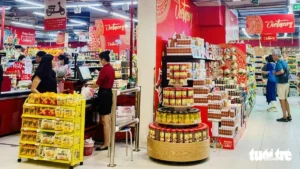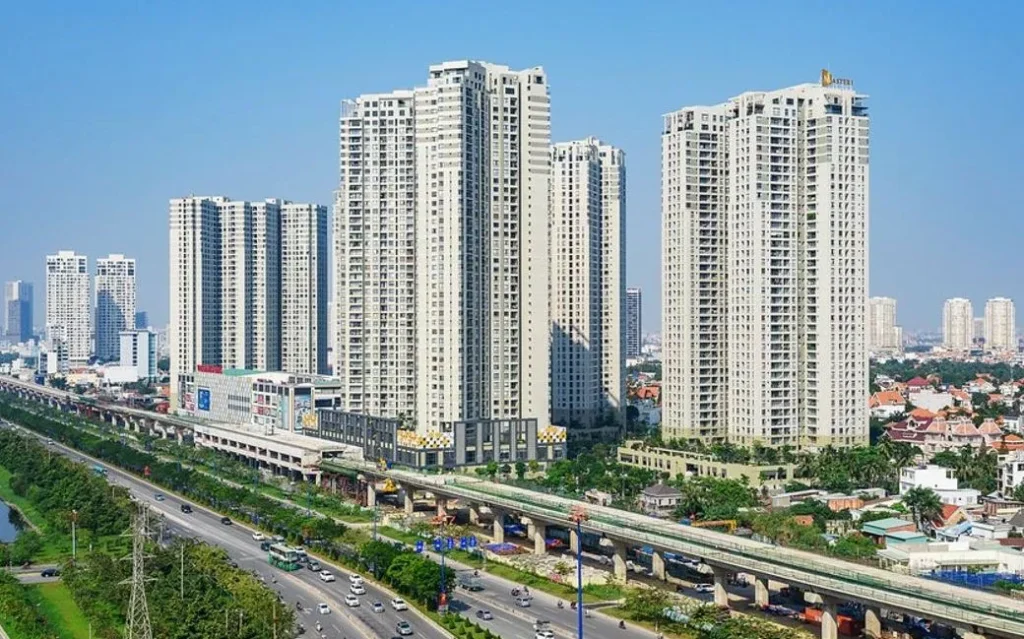The apartment market in Ho Chi Minh City from now until 2027, the future supply will reach more than 40,000 units; notably, Thu Duc city is expected to account for half of that number.
According to research by Savills Vietnam, in the townhouse and villa segment , with an expected supply of about 4,000 units from 19 projects; of which Thu Duc city also accounts for 30%. Along with that, neighboring provinces such as Binh Duong and Dong Nai are also markets that many investors and people with housing needs are interested in.
It can be seen that this area is the main source of housing supply in the market, attracting the attention of both investors and individual buyers. “In recent times, infrastructure investment in Ho Chi Minh City has focused heavily on the East. Therefore, the interest in the Thu Duc market has not only occurred since the new planning but has existed for a long time,” said Ms. Cao Thi Thanh Huong, Senior Manager of Savills Research Department, Ho Chi Minh City.
According to Ms. Huong, there are many factors that make this area always in the “sights” of both investors and buyers. Thu Duc City is planned with many subdivisions in strategic locations. Thu Thiem Peninsula, located next to the central area, is planned to become a new financial center, with clean land funds and a public auction process that has attracted many investors, especially foreign investors. However, some legal problems in the past have made the development of this area slower than planned. In the coming time, investors expect the authorities to soon announce a clear auction roadmap and legal framework to participate in the market in a more transparent and convenient manner.
Many areas of Thu Duc city are continuing to form satellite cities. Besides developed areas such as Thao Dien, An Phu, areas such as university villages or high-tech zones still have land funds ready to receive large investment capital with the potential to attract labor as well as continue to develop new residential areas.
“Thu Duc City has a great advantage as the gateway connecting the center of Ho Chi Minh City to the provinces in the Southern key economic region and has received strong investment in infrastructure over the past years. The selling price and supply here are continuously increasing but still have a good absorption rate, proving the great potential of the area,” said Ms. Huong.
For commercial real estate, this segment usually develops after the residential market. When the residential community increases and stabilizes, the commercial demand will increase accordingly. In addition, the Metro Line No. 1 has just come into operation, which is an important driving force for commercial projects, especially retail and office.
“Some projects have anticipated metro destinations and performed very well, typically Vincom Mega Mall Thao Dien, Estella Place or OneHub in the high-tech zone. These projects all achieved good rental prices and occupancy rates,” Ms. Huong cited.
Along with the strong development trend of the housing market in the East, the development trend and shift to neighboring provinces such as Dong Nai and Binh Duong has also been recorded quite strongly. The reason is clearly stated by real estate experts, that is due to high selling prices and scarcity of new supply in the East in particular, Ho Chi Minh City in general, has promoted the demand to shift to neighboring provinces; in which, Dong Nai achieved a high absorption rate of 78%, 35 percentage points higher than Ho Chi Minh City, the transaction volume mainly focused on products of 15 – 20 billion VND. Binh Duong followed with an absorption rate of 65%, 22 percentage points higher than Ho Chi Minh City, mainly thanks to products under 10 billion VND.
According to CBRE Vietnam, in the context of primary selling prices in Ho Chi Minh City remaining high and beyond the affordability of the majority of homebuyers, markets on the outskirts of Ho Chi Minh City such as Binh Duong and Dong Nai, especially in areas with convenient traffic connections, will increasingly receive more attention from homebuyers.
Commenting on this shifting trend, a representative of Avison Young Vietnam Company said that developing transport infrastructure and urbanizing suburban areas is the key to solving the imbalance between supply and demand of real estate. Major transport projects such as ring roads, highways and public transport systems need to be prioritized to increase connectivity between the city center and suburban areas. This will not only reduce pressure on central areas but also promote the sustainable development of satellite urban areas.
















